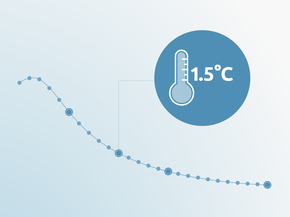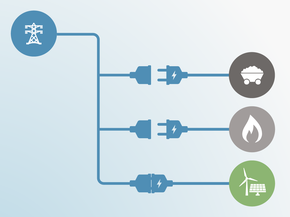Assumptions
Historic emissions
Greenhouse gas emission inventories are based on the CRF 2019 submitted to the UNFCCC (UNFCCC, 2018)
Pledge
We calculated targets for 2020, 2025, and 2030 from the most recent national inventory submissions (UNFCCC, 2018) and based on the latest UNFCCC information on Convention pledges and Kyoto targets.
We calculated Switzerland's LULUCF accounting quantities in 2020 for afforestation, reforestation and deforestation using the current Kyoto rules and for forest management using a net-net approach with a projected reference level for 2013–2020. Switzerland has excluded emissions from extreme events (e.g. forest fires) in calculating their reference level.
Switzerland’s NDC includes LULUCF, for which the details of the accounting rules have yet to be decided. The NDC states the desire to use a reference level for forest land, while emissions for other land uses will be included both in the target and baseline years. We assume that the accounted LULUCF emissions in 2030 are the same as the projected LULUCF emissions (i.e. the forest reference level would be set at zero). This results in about 1MtCO2e, which is added to the 2025 indicative target and 2030 target. Since this is likely an over-estimate of the accounted LULUCF emissions, we show the target as a range, with the lower end of the range representing emission levels excluding this accounting rule.
Current policy projections
We use the “with measures” scenario submitted to the UNFCCC in Switzerland’s third biennial report for our current policy projections (Swiss Confederation, 2018). The scenario reflects the current state of legislation, also taking into account the stipulated strengthening of existing policies and measures (i.e. any strengthening foreseen under current legislation).
The planned policy projections are based on the “with additional” measures scenario of the third biennial report. Many of these measures were included in the draft of the amendment of the CO2-Law rejected in December 2018 (Swiss Confederation, 2018). However, we decided to still include it as an even more ambitious version of the amendment is currently discussed by the Swiss Parliament with significant chances of being adopted.
Global Warming Potentials
The CAT uses Global Warming Potential (GWP) values from the IPCC’s Fourth Assessment Report (AR4) for all figures and time series. Assessments completed prior to December 2018 (COP24) used GWP values from the IPCC’s Second Assessment Report (SAR).
Further analysis
Latest publications
Stay informed
Subscribe to our newsletter






